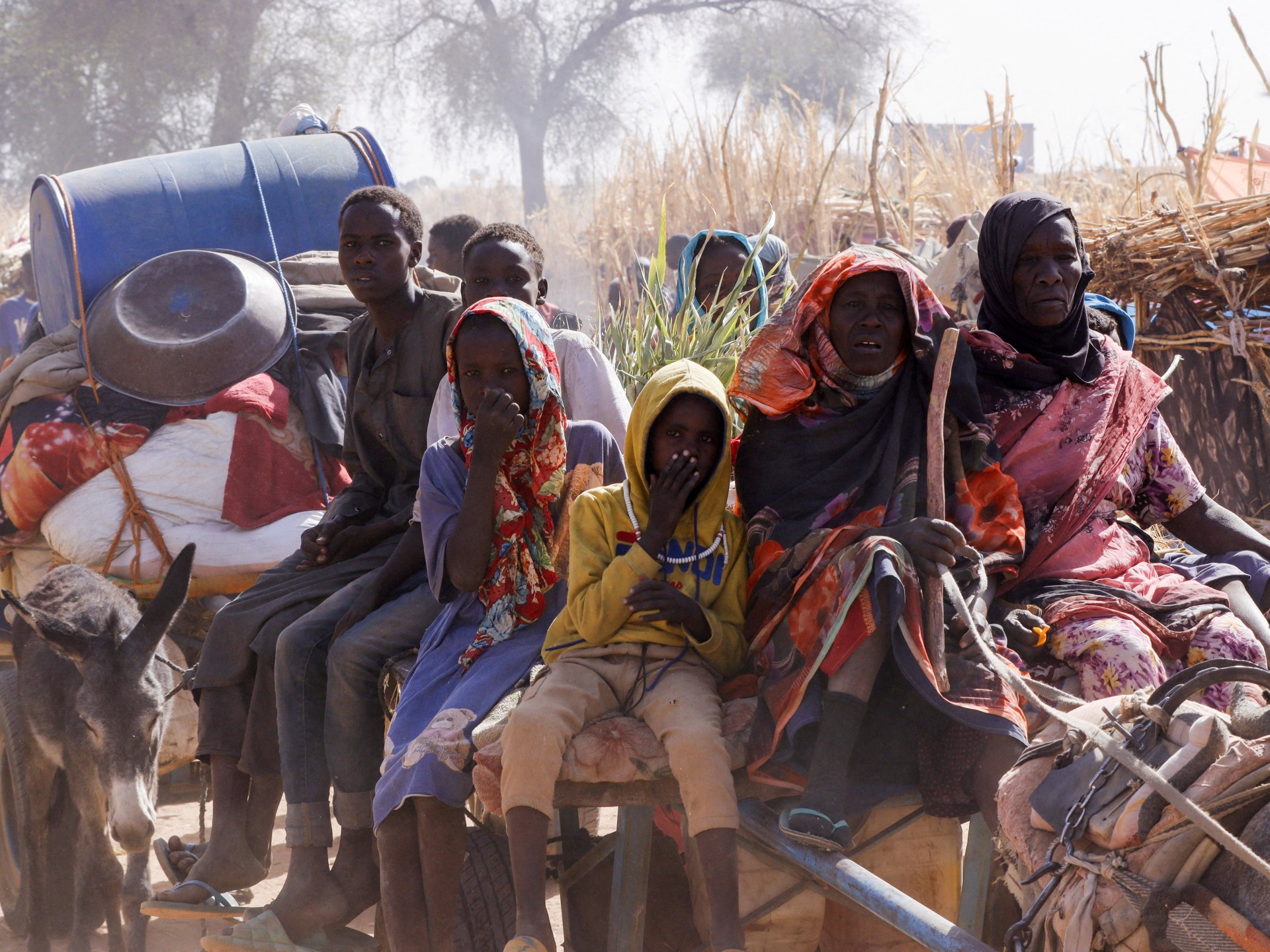As the brutal civil war rages for a third year, the World Food Programme (WFP) warns that thousands of families in western Sudan’s besieged city of El-Fasher are “risk of starvation.”
The paramilitary Rapid Support Forces (RSF), which have been at war with the government-aligned Sudanese armed forces (SAF), have been under siege since May last year.
Hunderte of thousands of civilians have been trapped in the city because of the RSF’s dwindling food supplies and limited humanitarian access, and the city has been encircled, blocking all major roads.
According to Eric Perdison, the WFP’s regional director for East and Southern Africa, “everyone in El-Fasher is facing a daily struggle to survive.”
Over the course of two years of war, people’s coping mechanisms have completely exhausted. Life will be lost without quick and steady access.
El-Fasher is the SAF’s final significant city in the Darfur region. Since the paramilitary was removed from Khartoum, the Sudanese capital, this year, it has been under renewed attack by RSF fighters.
In April, a significant RSF assault on the Zamzam displacement camp near El-Fasher forced tens of thousands of people to flee. In the state capital, many people have sought refuge.
El-Fasher’s prices for staple foods like sorghum and wheat, which are used to make traditional flatbreads and porridge, are up to 460 percent higher than those of other parts of Sudan, according to the WFP.
The United Nations agency noted that community kitchens that once fed displaced families have largely closed down due to a lack of supplies, while markets and clinics have been attacked.
While acute malnutrition is rising, especially among children, desperate families are reported to be surviving on animal waste and food waste.
Nearly 40% of children under the age of five in El-Fasher are currently experiencing acute malnourishment, and 11% are suffering from severe acute malnourishment, according to the UN.
As traffic jams increase as the rainy season, which peaks in August, further hampered efforts to get to the city.
According to the UN, famine was first declared in Zamzam last year, before it spread to two other nearby camps, al-Salam and Abu Shouk, and to some southern Sudanese regions.
Irreversible harm
The UN describes the war as the largest displacement and hunger crisis in the world, killing tens of thousands of people and causing millions of people’s displacement.
The army actually has two divisions: the army controls Sudan’s north, east, and center, and the RSF controls almost all of Darfur and parts of the south.
In a challenge to Khartoum’s military-led authorities, a Sudanese coalition led by the RSF announced last month that it would form an alternative government.
As the war rages, the new self-proclaimed government could cause divisions, worsen the humanitarian crisis, and create rival institutions.
UN agencies are currently experiencing one of their worst funding cuts in decades as a result of decisions by the United States and other donor countries to reduce their funding for foreign aid.
As a result of a scaling-back in funding, UNICEF issued a warning on Tuesday that an entire generation of Sudanese children are now at risk of irreversible harm.
“Children have limited access to clean water, food, and medical care. Many good children are reduced to just skin and bones, according to UNICEF’s representative in Sudan, Sheldon Yett, who spoke via videolink from Port Sudan.
According to UNICEF, children were being denied access to life-saving services because of funding cuts, UNICEF said.
Many of our partners in Khartoum and other locations have been forced to reduce their activities due to recent funding cuts. According to Yett, “We are being stretched to the limit in Sudan as children die from hunger.”
“A generation of children in Sudan is in danger of suffering irreparably,” he said.
According to the UN Office for the Coordination of Humanitarian Affairs (OCHA), only 23 percent of the Sudanese $4.16 billion global humanitarian response plan has been funded.
No food has been delivered to this area in a year since the famine was confirmed in Zamzam camp. El-Fasher is still under siege. Now, according to Jens Laerke of OCHA, “we need that access.”
Meanwhile, North Darfur’s families are now more desperate because of a cholera outbreak, which has also increased their despair.
According to Adam Rijal, spokesman for the General Coordination for Displaced Persons and Refugees in Darfur, the death rate from the water-borne disease has increased to 191 in the area.
According to a statement from Rijal, at least 62 people have died from the disease in Tawila, North Darfur. In Nyala, South Darfur state, the displacement camps Kalma and Otash camp, both of which have been built, have also lost nearly 100 lives.
Source: Aljazeera

Leave a Reply